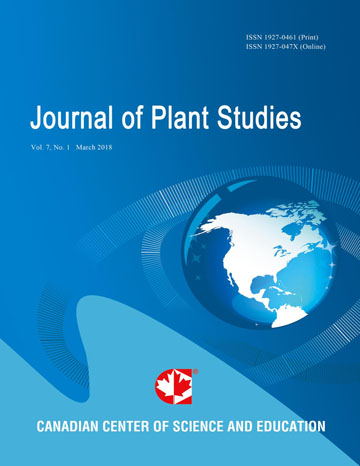Response of Assorted Maize Germplasm to the Maize Lethal Necrosis Disease in Kenya
- Sitta J.
- Nzuve F. M.
- Olubayo F. M.
- Mutinda C.
- Muiru W. M.
- Miano D. W.
- Muthomi J. W.
- Leley P. K.
Abstract
Maize (Zea mays L.) is the most widely grown staple food crop in Sub Saharan Africa (SSA) and occupies more than 33 million hectares each year. The recent outbreak and rapid spread of the Maize Lethal Necrosis (MLN) disease has emerged as a great challenge to maize production, threatening food security for the majority of households in the Eastern Africa region with yield loss estimated to be 50-90%. The disease is a result of synergistic interaction between two viruses, Sugarcane mosaic virus (SCMV) and Maize chlorotic mottle virus (MCMV). The objective of this study was to identify maize genotypes with resistance to MLN. In season one, 73 maize genotypes comprising 25 inbred lines from research institutes, 30 lines from the International Maize and Wheat Improvement Centre (CIMMYT) and 18 farmer varieties were screened for resistance to MLN. In season 2, only 48 genotypes were screened after some of the inbred lines showed complete susceptibility to MLN. These genotypes were grown in three replications in a completely randomized design in polythene bags in the greenhouse at the University of Nairobi. The plants were artificially inoculated using a mixture of SCMV and MCMV. .Weekly MLN disease severity scores using a scale of 1 to 5 (1 = highly resistant and 5 = highly susceptible) and % MLN incidence were recorded and eventually converted into Area under Disease Progress Curve (AUDPC) to give an indication of the disease intensity over time. The plants were allowed to grow to flowering stage to observe the effect of the MLN on the maize productivity. Analysis of Variance revealed wide genetic variation among the genotypes ranging from resistant to highly susceptible. In season 1, three farmer varieties namely MLR2, MLR11 and MLR13 showed resistance to MLN with a mean severity score of 2. In season 2, MLN12, MLN17, MLN18, MLN19, and MLR4 showed low MLN severity ranging from 2-3. The genotypes MLR6, MLR9, MLR16 and MLR18 showed MLN severity of 3 and early maturity traits. This study also validated the presence of MLN resistance among some CIMMYT lines depicted to show resistance in previous studies. These resistant genotypes could serve as donors in the introgression of the resistance into the adapted Kenyan maize backgrounds. This will go a long way in ensuring sustainable maize productivity while improving the livelihoods of the small-scale farmers who form the bulk of the major maize producers in Kenya.
- Full Text:
 PDF
PDF
- DOI:10.5539/jps.v6n2p65
Index
- AGRICOLA
- CAB Abstracts
- CABI
- CAS (American Chemical Society)
- CNKI Scholar
- Elektronische Zeitschriftenbibliothek (EZB)
- Excellence in Research for Australia (ERA)
- Google Scholar
- JournalTOCs
- Mendeley
- Open policy finder
- Scilit
- Standard Periodical Directory
- Technische Informationsbibliothek (TIB)
- WorldCat
Contact
- Joan LeeEditorial Assistant
- jps@ccsenet.org
